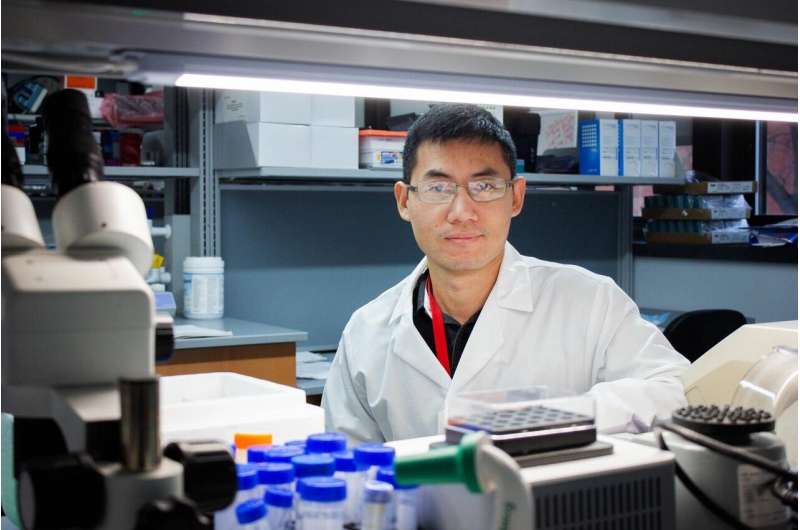The Lin Lab at the MMRI, quantified the number of brown fat cells present in newborn animals. For years, researchers have argued over whether brown fat continues to grow after birth. Dr. Lin and his team have become the first to prove that it does. Credit: Masonic Medical Research Institute
Brown fat, also known as brown adipose tissue, is a special type of fat that "turns on" (becomes activated) when you get cold, to help maintain body temperature. Importantly, brown fat is a biological fuel that can increase the metabolic rate, decrease fat storage, and thereby, lower one's propensity for developing obesity. Interestingly, it was previously thought that individuals were born with only a finite number of brown fat cells. Here, and for the first time, a recent publication in the journal Scientific Reports identifies that brown fat can continue to grow and divide, even after birth. This finding has major implications; scientists can try to increase the overall number of these cells to prevent or reduce the onset of obesity.
Dr. Zhiqiang Lin, Assistant Professor and senior author of the manuscript, together with his research team at the Masonic Medical Research Institute (MMRI), quantified the number of brown fat cells present in newborn animals. "For years, researchers have been arguing over whether brown fat continues to grow after birth—we can now say with certainty that it does. This discovery opens a whole new direction for future breakthroughs. Our next step will focus on identifying the developmental signals responsible for the growth of brown fat cells and determining whether we can manipulate gene expression to generate more" said Dr. Lin.
The human body has two main forms of fat: brown and white. Brown fat acts as a furnace in the body, burning energy and turning it into heat. White fat, on the other hand, operates as a freezer, storing energy for later use. When the energy one consumes exceeds the energy exerted, obesity ensues. It is indeed a consequence of energy imbalance—white fat is storing more energy than brown fat is burning. This published manuscript is the first to suggest that brown fat continues to divide after birth, albeit only for a small window of 1-2 weeks. With this knowledge on hand, researchers can now interrogate the mechanisms that allow brown fat to grow and potentially devise ways to continue their propagation, as a means to control weight.
More information: Steven G. Negron et al, Both proliferation and lipogenesis of brown adipocytes contribute to postnatal brown adipose tissue growth in mice, Scientific Reports (2020). DOI: 10.1038/s41598-020-77362-x
Journal information: Scientific Reports
Provided by Masonic Medical Research Institute























